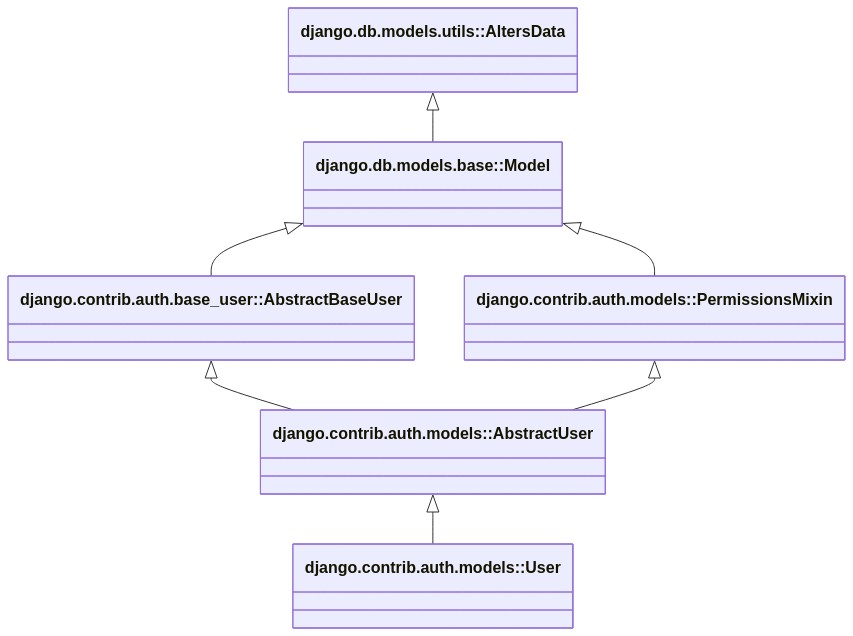A Jupyter notebook with access to objects from the Django ORM is a powerful tool to introspect data and run ad-hoc queries. This works with modern Django and Python 3.9, 3.10, and 3.11.
- Easy ipython notebooks with Django
- Built-in integration with the imported objects from django-extensions
- Inheritance diagrams on any object, including ORM models
Use your installation tool of choice, here we use venv and pip:
python -m venv venv
source venv/bin/activate
pip install dj_notebookFirst, find your project's manage.py file and open it. Copy whatever is being set to DJANGO_SETTINGS_MODULE into your clipboard.
Create an ipython notebook in the same directory as manage.py. In VSCode,
simply add a new .ipynb file. If using Jupyter Lab, use the File -> New -> Notebook menu option.
Then in the first cell enter:
from dj_notebook import activate
plus = activate("DJANGO_SETTINGS_MODULE_VALUE")In future cells, you can now load and run Django objects, including the ORM. This three line snippet should give an idea of what you can now do:
from django.contrib.auth import get_user_model
User = get_user_model()
User.objects.all()But wait, it gets better!
When you activated the Django environment, you instantiated a variable called 'plus'. The 'plus' variable is an object that contains everything loaded from django-extensions' shell_plus. Here's a demonstration, try running this snippet:
plus.User.objects.all()We also provide a utility for introspection of classes, which can be useful in sophisticated project architectures. Running this code in a Jupyter notebook shell:
plus.diagram(plus.User)Generates this image
|
Daniel Roy Greenfeld |
Cody Antunez |
Anna Zhydko |
Simon Davy |
Dave Parr |
Siew-Yit Yong |
